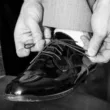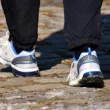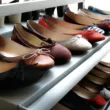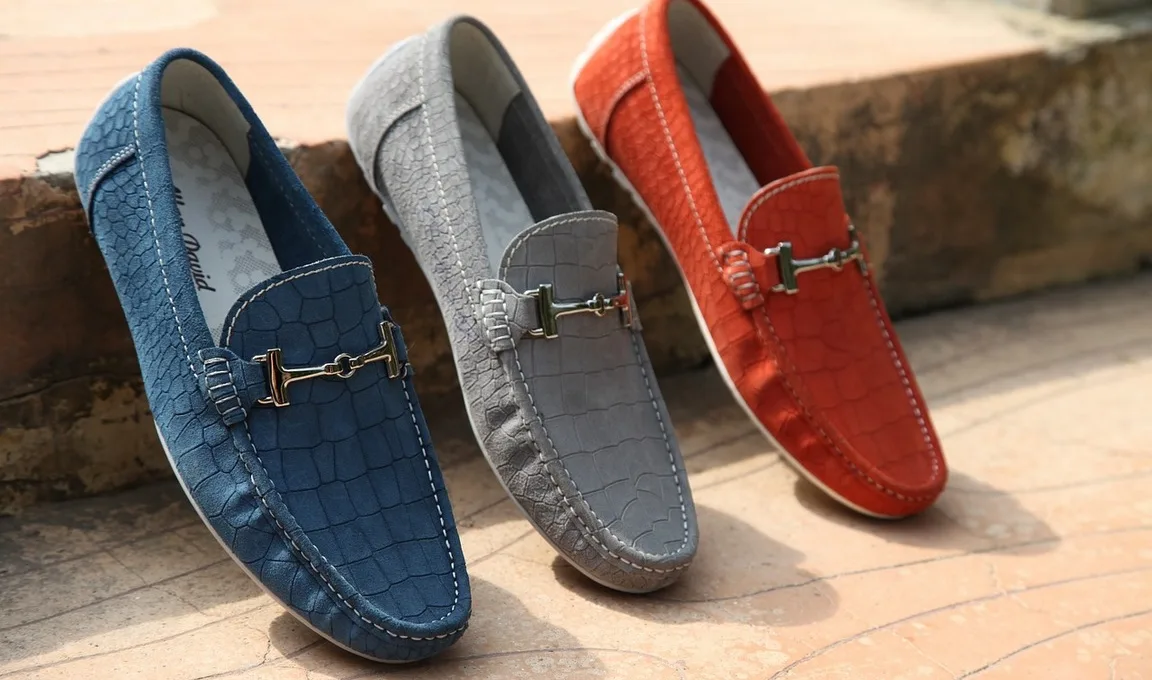Whether you love sneakers, designer shoes, or any other type of footwear, this eBook will help you better understand the processes involved in the production of your favorite footwear. With over 400 color photos and drawings, this book is a must-read for shoe designers, sneakerheads, and anyone who loves footwear! The eBook contains twenty-six chapters and is available in eBook PDF format. Read on to learn more about the process behind footwear design and construction.
The Science of Footwear
To make a pair of shoes, the upper part of the shoe is constructed. The upper part is made of the vamp, featherline, mudguard, throat, eyestay, lacing section, tongue, and sole. In addition, there is an extra layer of material called the lasting margin. This extra material is folded under the shoe when it is cemented to the sole. Once this part is complete, the shoe is ready for the next step.
After the upper, the shoe is put together in the making department. The making department is a small but crucial part of the entire process, where the shoe’s upper is attached to its sole. It has a big impact on the performance of the finished shoe. There are different methods of shoe construction, depending on the materials used, the purpose of the footwear, the available machinery, and the price. The making department can include a variety of steps that will create a unique shoe.
The manufacturing process for shoes used to be a one-person affair, but nowadays, many factories use a “nesting” process that separates the various departments. Within each department, specific tasks are performed. In the production process, specialized machines and humans perform a variety of tasks. Besides leather, the manufacturing process includes a variety of advanced materials such as polyurethane foam, gel or liquid silicone, and ethylene vinyl acetate.
The last is a wooden mold that mimics the shape of a human foot. The last is essential for determining the shape and size of a shoe. Traditionally, shoe lasts were made from wood, but now they are also made from plastic or metal. The last is an important part of shoe manufacturing, as it determines how the shoe will look and feel. The last is also crucial for determining the height of the heel.
After the upper is constructed, it is attached to the outsole using a special glue. The insole is temporarily attached to the last using nails. The upper is then glued to the insole board, which is the final step. The final process involves sewing the upper to the insole and lasting the shoe. It may take anywhere from 1.5 hours to two weeks to complete. A number of processes are performed during the entire process. In general, however, a shoe’s manufacturing process is similar to the assembly process described above.
The development of custom-made shoes began in ancient civilizations. In early times, people wore sandals. However, some cultures used shoes that were a bit larger in size. Ancient Egyptians made shoes out of woven reeds. They were boat-shaped and had thin reed straps and wider strips of the same material. This type of shoe lasted until the 19th century. In China, a similar shoe was developed in the 1800s. The shoe was constructed with layers of hemp, with decorative stitching.
The traditional handcraft process
Traditionally, shoes have been made by hand. Today, however, most shoes are made using machines. The traditional handcraft process of making shoes still involves many elements of the manufacturing process. One of the main components of a bespoke shoe is the last, or mold of the foot. The whole process typically involves more than one person, with one constructing the mold of the foot, and the rest cutting and stitching the leather.
The traditional handcraft process of making shoes is divided into three stages. The first step, or assembly, involves sewing the upper, insole, and outsole. The last step is to sew on ornamental perforations. The seams are covered with dyes, polishes, and ironing. Then, the rough areas of the shoe’s welt are dealt with. The traditional handcraft process of making shoes is an ancient art form that is still popular today.
In the 1800s, shoemakers made shoes by hand, using natural materials and high-quality leather. But this was no longer the case, as the introduction of synthetic materials meant that the quality of shoes became less important and more affordable. Meanwhile, the sneaker was born, transforming the traditional handcraft process of making shoes. Many of today’s sneakers are made with synthetic materials. The process is remarkably similar to the old artisanal methods, but a few of the details have been radically changed.
The second step in the traditional handcraft process is the shoe design department. After receiving the finished last, the designer can begin making the final shoe pattern. These patterns are made of various pieces, including the vamp, tongue, and quarters. These pattern pieces act as guides for the construction of the shoe. Then, the upper is made using leather, which is nailed onto the sole. During this process, the shoe last is trimmed, polished, and finished.
AGO technique was developed in 1910. This method is also known as stitchless or glued shoe making. The AGO is a machine that repairs and reattaches heavy fabrics. It is manually operated by hand crank. The foot is able to turn in any direction, while the lace is attached by a sewing machine. This ancient handcraft method is used to make the highest-end shoes and boots in the world.
Traditionally, the handcraft process of making shoes has involved hundreds of different parts and involves 200 operations. Nowadays, however, modern machines can perform every step of the process much faster. Each tool has a specialized purpose. One edge iron is used for a certain shoe thickness, while another is used for a different thickness. Once all parts are complete, the shoe is ready to move on to the next step. This process is still highly valued in many countries today.
The modern machine-aided process
Many of the processes involved in the production of shoes are now automated. Robots perform tasks such as cutting upper components. This process is much safer and more efficient, especially when compared to human workers. Companies such as Desma and Bata Industrials use robots in shoe manufacturing, and Speedfactory uses them to create its safety boots. Watch the video below to see how these robots help with the production of safety shoes.
The modern machine-aided process of making footwear begins with sewing. Sewing machines come in many types, and shoe stitching lines typically have hundreds of them. The style and number of sewing machines depends on the complexity of the shoe’s design. The machines also set the shape of the toe box and heel counters. A shoe may require several steps to complete its manufacturing process. If it requires a large number of steps, the entire manufacturing process can take a few days.
To meet these goals, a consortium of 34 European partners was formed to develop a computer-aided process for shoe production. The consortium included both private and public companies, universities, research centers, and shoemaking firms from all major European countries. The shoe industry has been keenly interested in the project. There are several reasons for this cooperation. The first is that a single country simply cannot provide all the know-how needed to achieve the desired research goals.
Next, the upper part of the shoe is cemented together or stitched together. This includes the featherline, vamp, mudguard, and throat. This filler layer is often made of cork, which provides support for the shoe’s front and rear sections. Then the entire shoe is assembled, with the insole being securely stitched or glued into the heel. These steps are repeated until the shoe is complete.
Customization of the designs is another major benefit of machine-aided manufacturing. Customized shoe designs can include specific colour combinations, materials, decoration details, and technology requirements. These customization processes require effective management and planning tools to ensure the perfect fit for each customer. Customized shoes can be grouped into two categories: best fit and custom made. However, the latter category tends to be more expensive. Fortunately, many companies now offer a wider range of options than ever before.
When this process was first introduced, shoemakers had to manually complete every stage of the production. Since bespoke shoe makers could not complete all processes in one day, this process required multiple separate steps. These labor-intensive processes forced many of the jobs to be farmed out. The women who made the shoes glued to the sole leather made 75 cents per day, but this wasn’t a pleasant experience. Moreover, a woman’s eyes were often affected while she worked sewing the shoes, which hurt her eyes.
Podobne tematy




